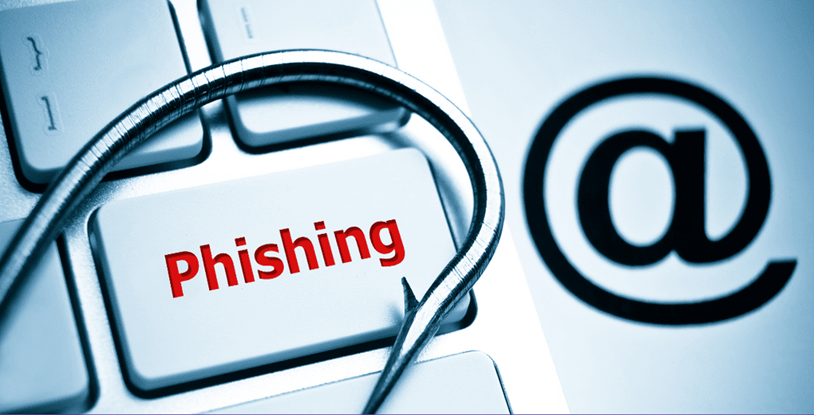Your cart is currently empty!

Phishing: Understanding the Threat and How to Protect Yourself in the Digital Age
Learn how to recognize and avoid phishing attacks. This guide provides actionable advice on identifying suspicious emails, texts, and websites, strengthening your online security, and protecting your sensitive information from malicious actors. Don’t become a victim – empower yourself with the knowledge to stay safe in the digital age.
What Is Phishing?
Phishing is one of the most pervasive and dangerous cyber threats in today’s digital landscape. It involves the use of fraudulent communication, typically email or text messages, to deceive individuals into revealing sensitive information such as passwords, financial details, or personal identification. This guide explores what phishing is, why it poses such a significant risk, the common methods used by attackers, key statistics, and prevention strategies to protect yourself.
Phishing is a form of cybercrime where attackers impersonate trustworthy entities to steal sensitive data. The term originates from the analogy of “fishing,” as attackers use fake bait to “hook” unsuspecting victims. Phishing campaigns often exploit human emotions like fear, urgency, and curiosity, making them highly effective at deceiving even the most cautious individuals.
Table of Contents
Why Is Phishing Dangerous?
These attacks are dangerous because they target the weakest link in cybersecurity: humans. Unlike other cyber threats that rely on technical exploits, these leverages social engineering to manipulate individuals into providing information or performing actions that compromise security.
Key risks associated with these attacks include:
- Financial Losses: Victims may unknowingly provide credit card details or banking credentials.
- Identity Theft: Stolen personal information can be used for fraudulent activities.
- Data Breaches: Employees falling for phishing scams can expose corporate networks.
- Reputational Damage: Organizations targeted by these attacks may lose customer trust.
Types of Phishing: Detailed Overview
Phishing manifests in various forms, each tailored to exploit specific vulnerabilities. Understanding these types, along with real-world examples, can help individuals and organizations recognize and thwart such attacks.
| Type | Description | Example |
| Mass-distributed emails impersonating legitimate organizations to steal sensitive information. | An email from “PayPal” claiming unusual activity and urging you to verify your account via a link. | |
| Spear | Targeted attacks aimed at specific individuals, often leveraging personal information. | A fake email to a manager appearing to be from their CEO requesting sensitive project files. |
| Smishing (SMS Phishing) | Fraudulent messages sent via text to trick users into sharing private details or clicking links. | A text from “Bank XYZ” saying your account is locked and providing a link to “reactivate” it. |
| Vishing (Voice Phishing) | Phone calls impersonating trusted entities to manipulate victims into revealing confidential data. | A scammer calls as “Microsoft Support,” claiming your computer is infected and needs remote access. |
| Social Media | Fake profiles, messages, or posts designed to extract personal or financial information. | A direct message on Instagram offering a prize in exchange for bank account details. |
| Search Engine | Malicious websites designed to appear in search results to lure unsuspecting users. | A fake online shopping site ranked high for “discounted electronics” leads to stolen payment details. |
| Evil Twin | Fake Wi-Fi networks mimicking legitimate ones to intercept sensitive data. | Connecting to “Airport_Free_WiFi” at a terminal, which is actually set up by an attacker. |
| Pharming | Redirecting legitimate website traffic to a malicious site without user knowledge. | Typing “amazon.com” in your browser but landing on a fraudulent site designed to steal login credentials. |
Email Phishing
What It Is: It is the most common and widespread form of phishing. Attackers send deceptive emails that appear to come from trusted entities like banks, online retailers, or government agencies.
How It Works:
- The email typically contains a sense of urgency, prompting victims to click on links or download attachments.
- Links often lead to fake websites that mimic legitimate ones to capture login details or personal information.
Example:
You receive an email from “Netflix” stating:
“Your account has been suspended. Please log in to reactivate your account.” The link redirects to a fake login page, where entering your credentials hands them over to the attacker.
| Statistics | Details |
| Percentage of attacks | 96% of phishing attacks occur through email. |
| Common impersonated brands | PayPal, Amazon, Netflix, and Microsoft. |
Spear Phishing
What It Is: Unlike broad email phishing campaigns, these targets specific individuals or organizations.
How It Works:
- Attackers use publicly available information, such as LinkedIn profiles or social media activity, to personalize their attacks.
- This makes the email appear credible and increases the likelihood of the victim responding.
Example:
A finance officer receives an email from what appears to be their CEO asking for an urgent wire transfer to a vendor.
Smishing
What It Is: Phishing via SMS, commonly referred to as smishing, uses text messages to trick victims.
How It Works:
- Texts often include malicious links or fake warnings, such as a blocked account or an urgent delivery update.
Example:
“Your FedEx package is delayed. Click here to track your delivery.” The link installs malware on your device.
Chart:

| Common Targets of Smishing | Percentage |
| Bank Account Fraud | 45% |
| Fake Deliveries | 30% |
| Prize Scams | 25% |
Vishing
What It Is: Attackers use phone calls to impersonate trusted entities like tech support, banks, or government agencies.
How It Works:
- Scammers create a sense of urgency or fear to manipulate victims into sharing sensitive details or granting remote access to their devices.
Example:
A caller claims to be from the IRS, threatening legal action unless payment is made immediately via prepaid gift cards.
Social Media
What It Is: Fraudulent activity conducted on social platforms, such as creating fake profiles or sending malicious direct messages.
How It Works:
- Attackers pose as friends, family, or companies to extract information or distribute malware.
Example:
A fake Facebook profile of a friend sends you a message saying, “Check out this video of you!” The link installs spyware.
Search Engine
What It Is: Attackers create malicious websites optimized for search engines to appear legitimate.
How It Works:
- Victims searching for specific products or services unknowingly visit fake websites.
Example:
Searching for “cheap laptops” brings up a fraudulent site offering deals. Entering your credit card details results in financial loss.
Evil Twin
What It Is: Attackers set up fake Wi-Fi networks to intercept sensitive data from connected devices.
How It Works:
- Victims unknowingly connect to a rogue network, allowing attackers to monitor activity.
Example:
Using an unsecured Wi-Fi hotspot at a café labeled “Free_WiFi,” where an attacker captures your email login credentials.
Table:
| Legitimate Wi-Fi | Evil Twin Wi-Fi |
| Starbucks_WiFi | Starbucks_Free_WiFi |
| AirportWiFi | Airport_Free_WiFi |
Pharming
What It Is: A sophisticated method where attackers manipulate DNS settings to redirect users from legitimate websites to fraudulent ones.
How It Works:
- Victims enter the correct website URL but are silently redirected to a malicious page.
Example:
Typing “paypal.com” in your browser directs you to a look-alike site that captures your credentials.
Prevention Tip: Always check for HTTPS and a valid SSL certificate when entering sensitive information.
Visual Chart: Distribution of Phishing Types
| Type | Percentage of Total Attacks |
| 65% | |
| Smishing | 15% |
| Vishing | 10% |
| Other Methods | 10% |
Statistics on Phishing Attacks
It remains one of the most prevalent cyber threats globally. Here are some compelling statistics:
- 2023: Over 80% of reported security incidents involved phishing attacks.
- Financial Impact: Businesses lose an average of $14.8 million annually due to these cyber attacks.
- Human Error: 90% of data breaches are attributed to these scams.
- Rising Trends: These attacks increased by 47% in the last year.
These statistics underscore the importance of education and proactive measures to combat phishing.
General Prevention Tips
While phishing attacks are sophisticated, following these best practices can significantly reduce your risk:
- Be Skeptical of Unexpected Messages:
- Verify emails, texts, or calls from unknown sources.
- Check for spelling errors, generic greetings, and suspicious links.
- Inspect Links Before Clicking
- Hover over links to see the actual URL.
- Avoid clicking on links that redirect to unrelated domains.
- Enable Multi-Factor Authentication (MFA)
- Use MFA to add an extra layer of security beyond just a password.
- Keep Software Updated
- Regularly update your operating system, browser, and antivirus software to patch vulnerabilities.
- Use Anti-Phishing Tools
- Install browser extensions or antivirus programs that flag phishing sites.
- Educate Yourself and Others
- Stay informed about the latest phishing techniques.
- Share knowledge with family, friends, and colleagues.
Conclusion
Phishing is a persistent threat that targets individuals and organizations alike. By understanding its various forms, recognizing common tactics, and following preventive measures, you can protect yourself from falling victim to these scams. As technology evolves, staying vigilant and informed remains your best defense against attacks.
FAQ
-
What should I do if I suspect a phishing email?
Avoid clicking on any links or downloading attachments. Report the email to your IT department or the service provider being impersonated.
-
Can antivirus software prevent phishing attacks?
Antivirus software can help detect malicious links or attachments but cannot guarantee protection from all these attempts. Human vigilance is essential.
-
How can I tell if a website is legitimate?
Check for HTTPS in the URL, verify the domain name, and look for trust indicators like security badges.
-
Are phishing attacks only limited to emails?
No, they can occur through text messages, social media, phone calls, or even fake websites.
-
Why do phishing attacks work so well?
They exploits human emotions such as fear, urgency, and curiosity, making it easy for attackers to deceive victims.
-
Can ethical hacking help prevent phishing attacks?
Yes, absolutely! By conducting thorough security assessments, ethical hackers can identify and help organizations fix vulnerabilities that could be exploited by phishers.
This includes identifying weaknesses in email security systems, network defenses, and employee training programs.
By addressing these vulnerabilities, organizations can significantly reduce their risk of falling victim to successful attacks.


